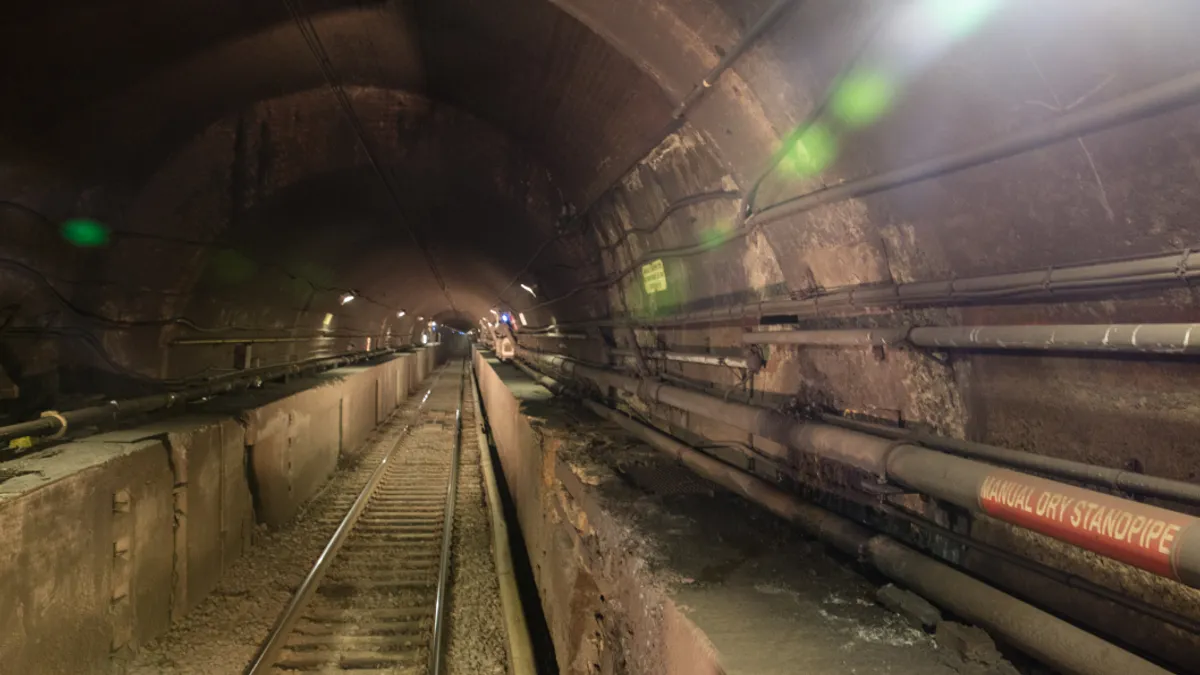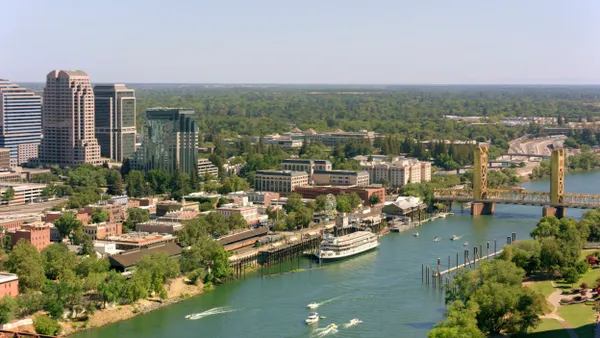Just weeks after New York’s Metropolitan Transit Authority (MTA) announced it was beginning its largest capital program ever, COVID-19 hit the region, and the area quickly became the epicenter of the coronavirus infection in the U.S.
As the state grappled with the public health crisis, work on MTA projects slowed or halted so sites could get up to speed with new safety protocols, including social distancing practices, enhanced cleaning, health screenings for jobsite employees and teleworking for MTA office workers.
"We came out with very detailed guidance regarding social distancing, we ran a contractor hotline for COVID advice and information and got out clear guidance about how to handle positive cases," said Janno Lieber, MTA chief development officer, during a webinar last week sponsored by New York City accounting firm Anchin.
A total of 50 MTA projects out of more than 350 active jobs were shut down during the early weeks of the outbreak, but Lieber said all but one have come back online.
Funding issues
Now that the immediate health crisis has lessened, MTA officials are looking to get the capital works program off the ground. The authority's $51.5 billion 2020-2024 Capital Program includes $40 billion for New York City subway and bus projects alone. The future of the plan is uncertain due to funding woes from a massive loss of ridership and declining tax revenue precipitated by the outbreak.
"MTA’s financial position has eroded dramatically” since the outbreak began, Lieber said, noting that the authority is losing about $800 million a month in revenue due to the crisis.
Projects that were underway are continuing "full speed," he said, but on-the-books jobs are in limbo as the authority awaits word on whether it will receive federal funding in addition to the $3.8 billion it received in April’s CARES Act. Industry estimates say that even with the CARES Act funds, the MTA faces at least an $8.5 billion shortfall for 2020 and 2021.
New York officials have asked the federal government for $3.9 billion in the HEROES Act, which was recently passed by the House of Representatives.
Improvements for contractors
Lieber oversees the MTA's newly formed Construction & Development department, tasked with centralizing construction operations and pursuing alternative project delivery methods. Construction & Development is also focused on creating an engineering department to ensure the agency's infrastructure projects are high quality and sustainable; establishing a customer service-focused department; creating uniform, MTA-wide design and operations standards; and centralizing operating and support functions.
During the webinar, Lieber said that contractors are seeing many of these changes, including more efficient bonding requirements, getting paid on 15-day cycles and an increased emphasis on the design-build delivery method.
"We have to make sure that we are a customer that the industry wants to work for," he said, noting that even with the MTA's financial woes the agency has been paying contractors on time.
Wish lists
Other webinar presenters detailed the New York City transit projects they most want to see prioritized this year, including:
- The renovation of Penn Station in midtown Manhattan.
- Phase 2 of the Second Avenue subway line, part of a plan to connect Harlem to Hanover Square in Lower Manhattan. The proposed full line would be 8.5 miles (13.7 km) and 16 stations long, serve a projected 560,000 daily riders and cost more than $17 billion.
- Progress on the Gateway Northeast Corridor commuter rail line. The Gateway Program’s first phase includes the construction of a new tunnel under the Hudson River, the rehabilitation of the existing tunnel and the replacement of the Portal Bridge.
- Improved signaling for subway trains to get riders through the system more quickly. "The last thing people want is to be stuck between stations in the middle of a public health crisis," said Vincent Alvarez, president of the New York City Central Labor Council, AFL-CIO.
- The East Side Access commuter rail project that will connect an estimated 160,000 Long Island Rail Road (LIRR) passengers to Grand Central Terminal.
- The Metro-North Penn Access Project that will introduce Metro-North service into New York’s Penn Station, providing a direct ride to the west side of Manhattan for riders in Connecticut, Westchester and the Bronx. The plan will also bring four new fully accessible stations to the east Bronx.












